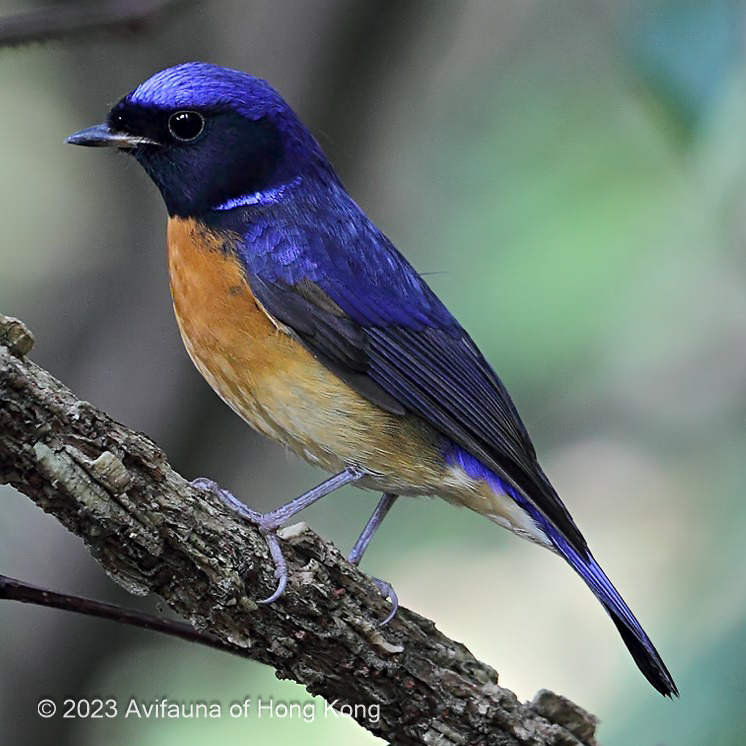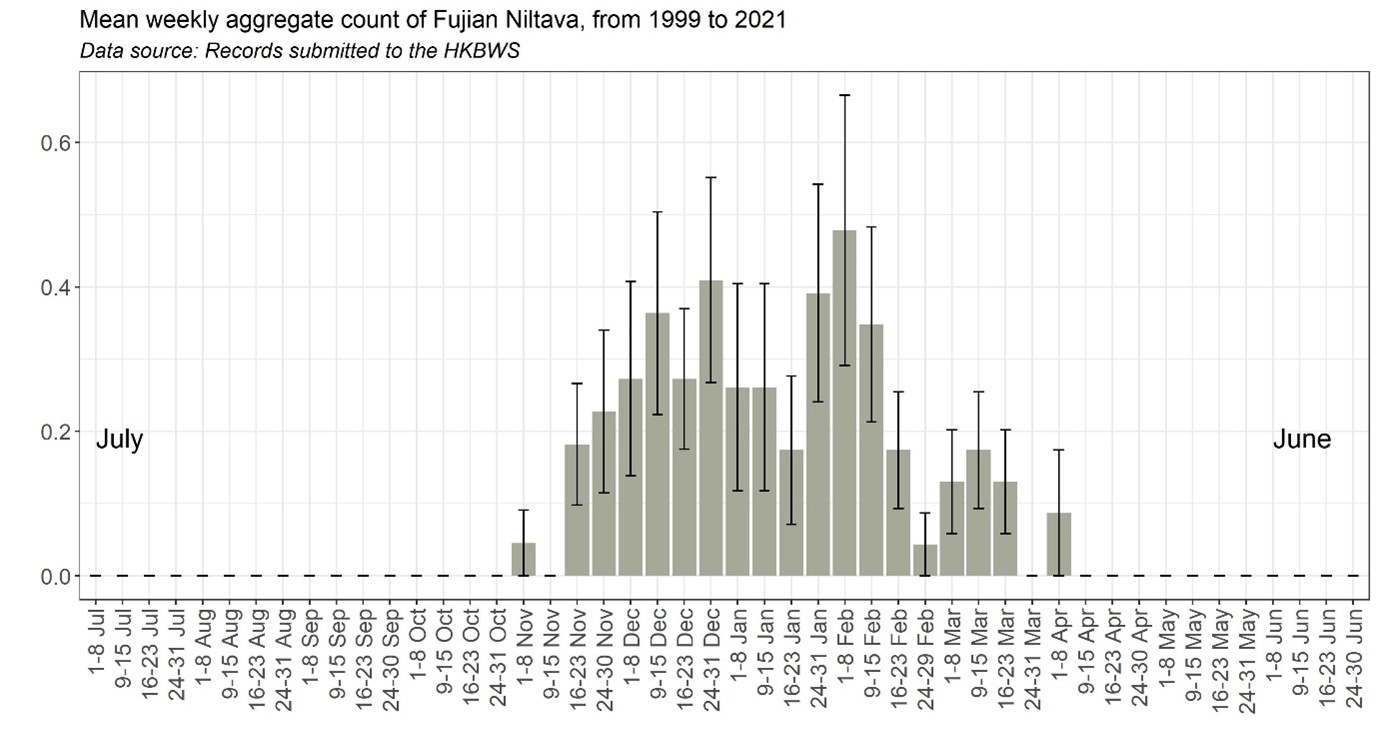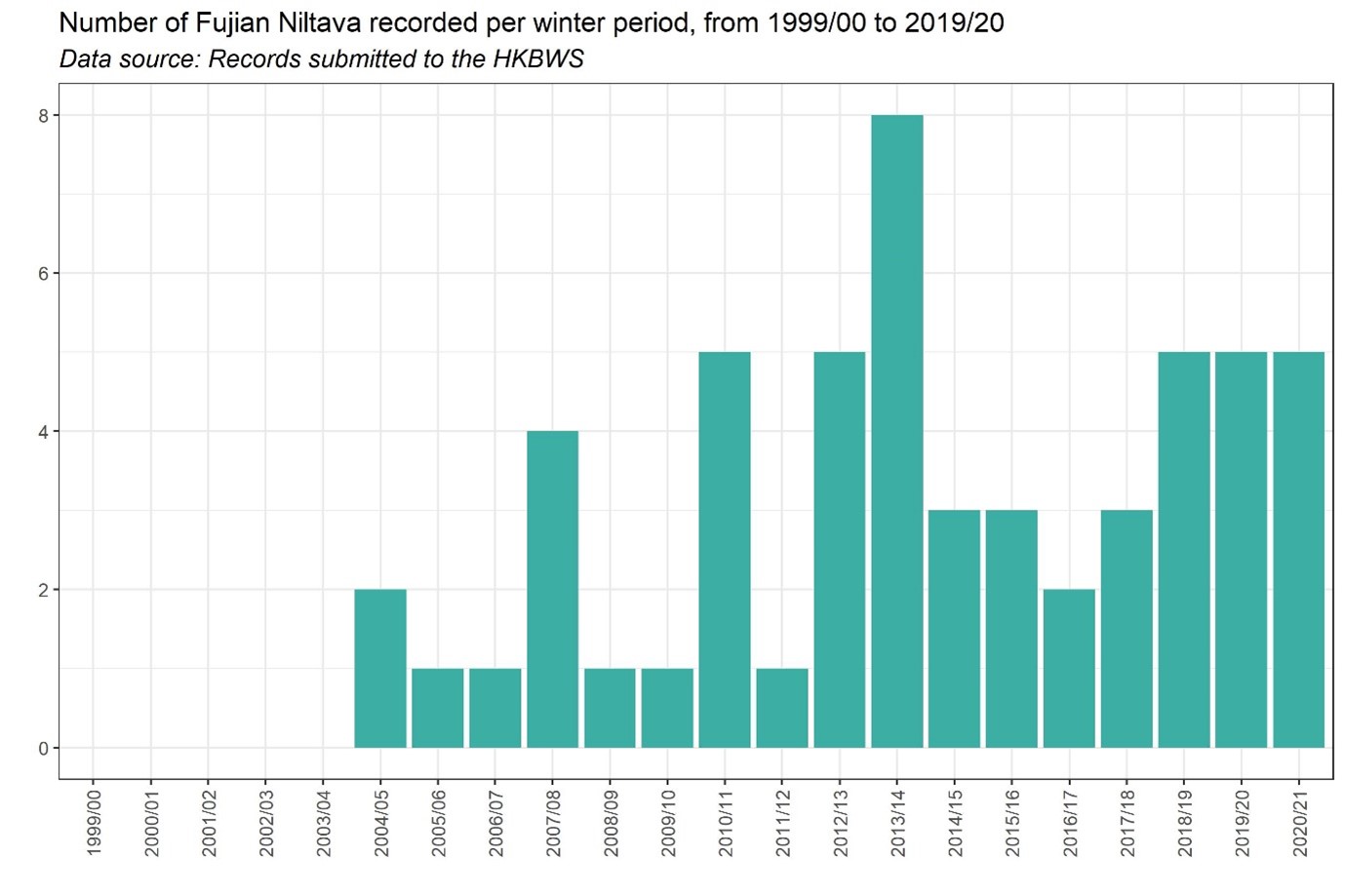Fujian Niltava Niltava davidi 棕腹大仙鶲
Category I. Scarce but annual visitor in small numbers, usually to closed-canopy forest.
IDENTIFICATION

Feb. 2011, Michelle and Peter Wong.
18 cm. A stout, short-billed, large-headed flycatcher. The male’s crown (especially front and side), shoulder and thin line on neck sides are bright blue, contrasting with blue-black forehead, chin, throat, nape and mantle. Paler blue from rump to tail. The breast, upper belly and flanks are rich orange-rufous, clearly demarcated from the dark blue throat. The lower belly and undertail coverts are paler orange, which is diagnostic among niltavas in HK.
First-winter males have a whitish base to the lower mandible and brown flight feathers and greater coverts.

Jan. 2012, Michelle and Peter Wong.
The female has brown head and upperparts, brown breast and whitish central belly and vent. Wing coverts and flight feathers are edged rufous. Distinctive features are a white gorget across the lower throat and, sometimes, a pale blue line on the side of the neck.
VOCALISATIONS
Vocalisations uttered in HK are variants of the same high- and level-pitched note.
DISTRIBUTION & HABITAT PREFERENCE
Mainly occurs in closed-canopy woodland in the central and eastern New Territories, but also at times in urban parks (Kowloon Park, King’s Park, Ho Man Tin) where there are sufficient trees. It prefers deeper, shadier areas, but may come out into the open.
OCCURRENCE
Fujian Niltava is a scarce but annual winter visitor to woodland areas. Extreme dates are 22 October and 10 April. Up to two birds were recorded in nine winters from 1968/69 to 1995/96, apart from four in the latest. There were no records from 1996/97 to 2003/04, but it has been recorded every winter since.
All records since 2004/05 have occurred from 2 November to 8 April, with most from the third week of November to the second week of March, with a slight peak in the last week of January and the first half of February (Figure 1).
Most reports concern single birds, predominantly males, although both a male and female were present at Tai Po Kau on 1st and 7 January 2013 and at Lung Fu Shan on 25 November 2013. It is assumed that females are this species and not Rufous-bellied N. sundara, which is generally considered inseparable in the field.
Total numbers per winter are variable but no more than five birds are usually reported. The highest total was eight in winter 2012/13 (Figure 2).
Individual birds can be long-staying, e.g., a male was at Lung Fu Shan from 11 January to 22 March 2011.
BEHAVIOUR, FORAGING & DIET
Generally shy and unobtrusive, and thus overlooked, and usually alone or in pairs. Forages for insects. Sits unobtrusively on low perch to look for prey.
SYSTEMATICS & RANGE
Monotypic. Breeds in broadleaf evergreen forest up to 1700m in central and south China (Sichuan south to Yunnan and Guizhou, also Guangxi, Hainan and northwest Fujian) and Vietnam (west Tonkin, central Amman). Part of the population is migratory, with winter records from south Guangdong, HK, Laos, Vietnam and southwest Cambodia (Clement 2020, Craik and Minh 2018).
CONSERVATION STATUS
IUCN: Least Concern. Population trend stable.
Figure 1.

Figure 2.

Clement, P. (2020). Fujian Niltava (Niltava davidi), version 1.0. In Birds of the World (J. del Hoyo, A. Elliott, J. Sargatal, D. A. Christie, and E. de Juana, Editors). Cornell Lab of Ornithology, Ithaca, NY, USA. https://doi.org/10.2173/bow.fujnil1.01
Craik, R. C. and Le Quy Minh (2018). Birds of Vietnam. Lynx and BirdLife International Field Guides. Lynx Edicions, Barcelona.

